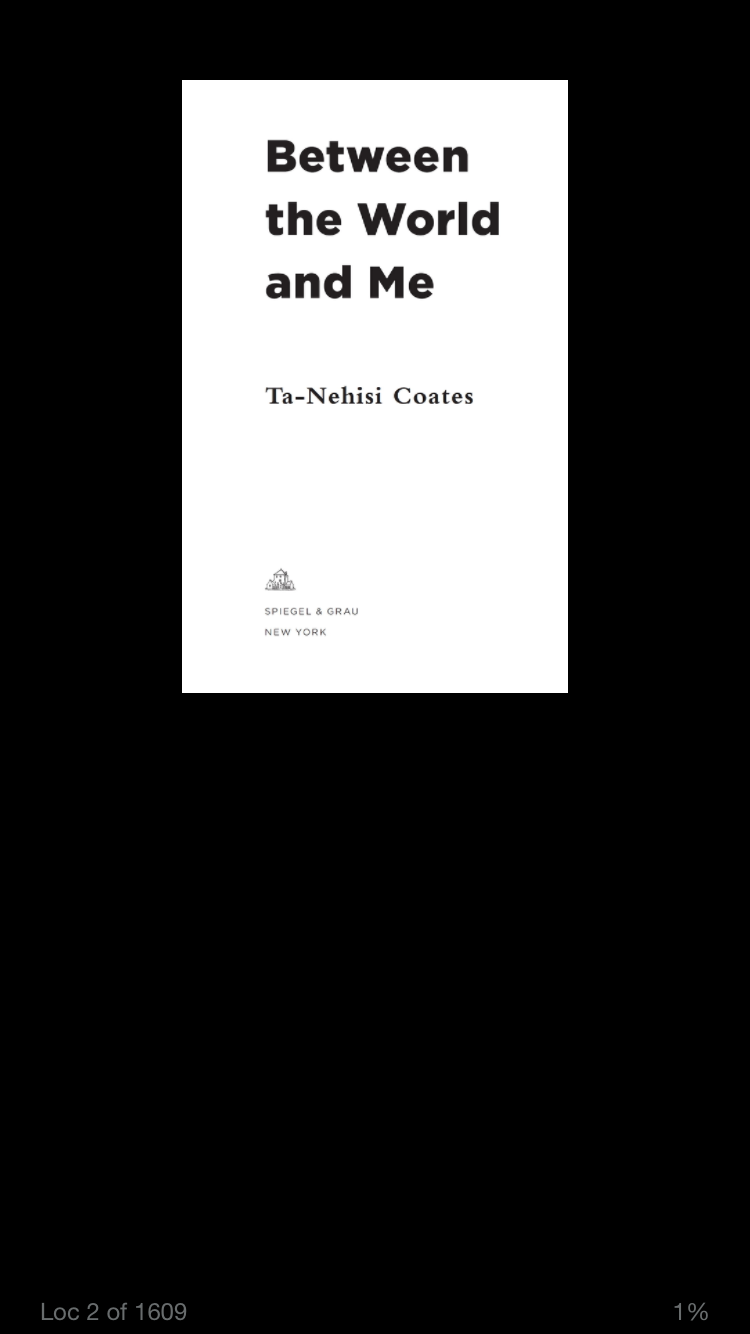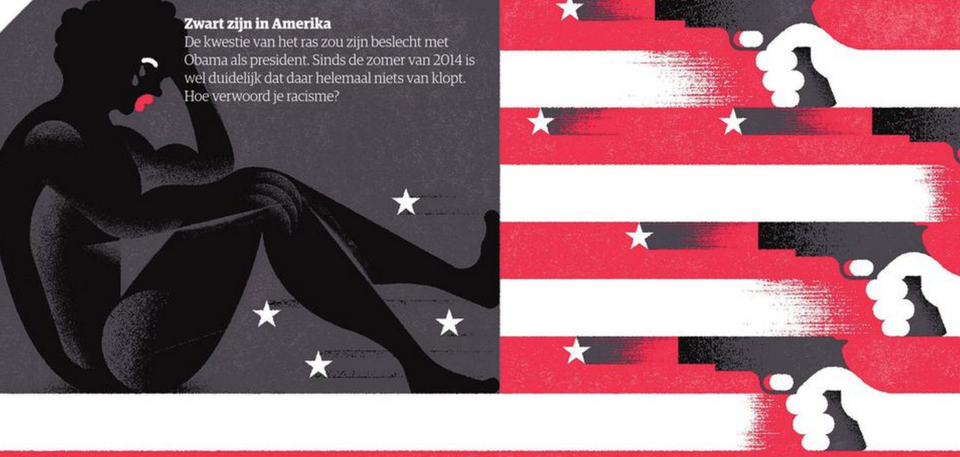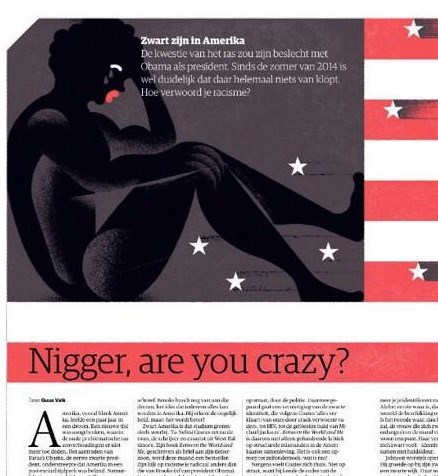
On Friday, July 31, 2015 a Dutch newspaper, NRC Handelsblad, published an article using the N-word in the headline title and illustrating it with blackface caricatures. When a friend of mine pointed this out to me I was shocked. How insensitive and sheer offensive and hostile! I had to find out more.
A Facebook post lead me to an opinion article in The Washington Post commenting on this aberration and referencing a couple of Twitter posts and responses from the NRC Handelsblad editorial staff. I also read the full article in NRC Handelsblad to find some sort of explanation.
The article in the Dutch newspaper is a review of several books on racism in the United States and how some current thinking on the topic is radically shifting from the idea that racism is something that can be overcome to the notion that racism is an inherent aspect of society.
Ta-Nehisi Coates is a leading author in this area and in his latest and bestselling book Between the World and Me, he describes how every society will always have a some form of racism or oppression. Whether it be slavery in the past or nowadays the violence against black people by police officers and institutionalized racism in our educational system (among others).
The other books being reviewed in the article are The Sellout by Paul Beatty and Loving Day by Mat Johnson. Both also addressing the illusion that the United States entered an era of post-racialism after Obama became president.
In line with these books, the title and illustrations where meant to underscore the persistent nature of racism in America and therefore intentionally pessimistic and even satirical. After all Paul Beatty's book is one vertiginous satire on being black in America and the title used in the Dutch newspaper is from his book quoting a black conservative judge.
The illustrations depict the stereotypes that the books under review are addressing: a white man with a gun representing police violence and caricatures of black people representing persistent oppression.
Furthermore, the editorial staff of NRC Handelsblad explains that the article was meant for a Dutch audience, both black and white, for which the N-word does not have such a direct meaning as is the case for Americans.
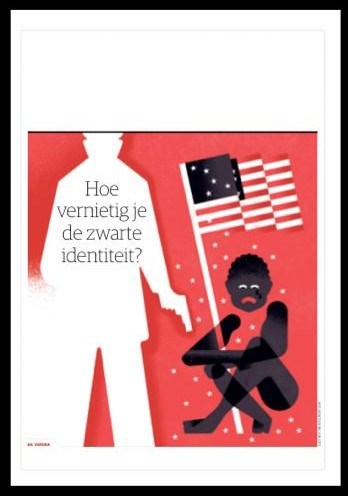
Being a Dutchy myself, I can see how these explanations work for the Dutch. Satire and cynicism work differently in the Netherlands compared to the United States and often more confronting to force a discussion.
However, it still leaves a very bad taste. A couple of things I'd like to address. First of all, considering the title was a quote from one of the books, it should have been placed in quotation marks. This is also acknowledged by the editorial staff of NRC Handelsblad as per The Washington Post article, but why then did they not do so? They are supposed to be professionals who should not commit such an oversight.
Second, Dutch people always claim not to be racist and admittedly a lot of forward thinking on race and racism stems from The Netherlands. But at the same time they are conflicted, because the tradition of Black Peet still exists in The Netherlands — and on a large scale. If you want to know more about Black Peet, please read my first column in BK Reader: "Zwarte Piet" — A Traditional Pitfall.
Third, the N-word cannot be used by white people. I think it should not be used by anyone, but especially not by white folks. The author of the article is white and being the Washington correspondent for the Dutch newspaper in question, he should know that.
I have to add here that the use of the N-word in the Netherlands is probably more common among both black and white people than is the case in the United States. Although not with the reason to offend, but as an endearing form of greeting instead. Simply because this is how the word is widely used in popular American music that reaches European mainland (with an "a" at the end, but the Dutch won't notice that different) — more reason to not use the word at all.
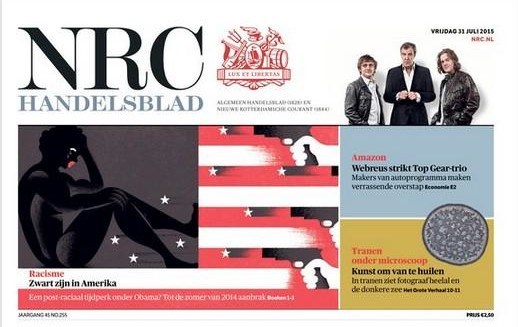
Fourth and final, publishing opinions and articles online comes with a responsibility. Even though this article was meant for a Dutch audience, the title was in English and the pictures bear more meaning for an American audience than for a Dutch. Most Dutch might not even get the meaning of the illustrations used.
Nowadays, with social media, one can expect that this type of news will travel the world in no time and reaches audiences that are severely offended by it. Initially though, only the title and pictures were tweeted without the context of the article. In this sense we also have a responsibility as a reader — not to base our opinions only on what you read on Twitter and Facebook.
But then again, in this day and age you have to expect this to happen and be prepared for responses that are based on snippets of information. However, in this case I feel that the content of the article does not justify the use of the N-word nor the illustrations.
Being provocative to stimulate discussion, yes, but being offensive, nah I don't think so. I could further delve into the subject of provocation by comparing this situation with for example the cartoons depicting Mohammed published in a Danish newspaper in 2005, but I'm not going to do that.
I'd like to end with admitting that I am also guilty of sometimes basing my judgements on half information. To be on the safe side, I decided to read Between the World and Me. I already downloaded it on my Kindle app (see screenshot below).
Yako
